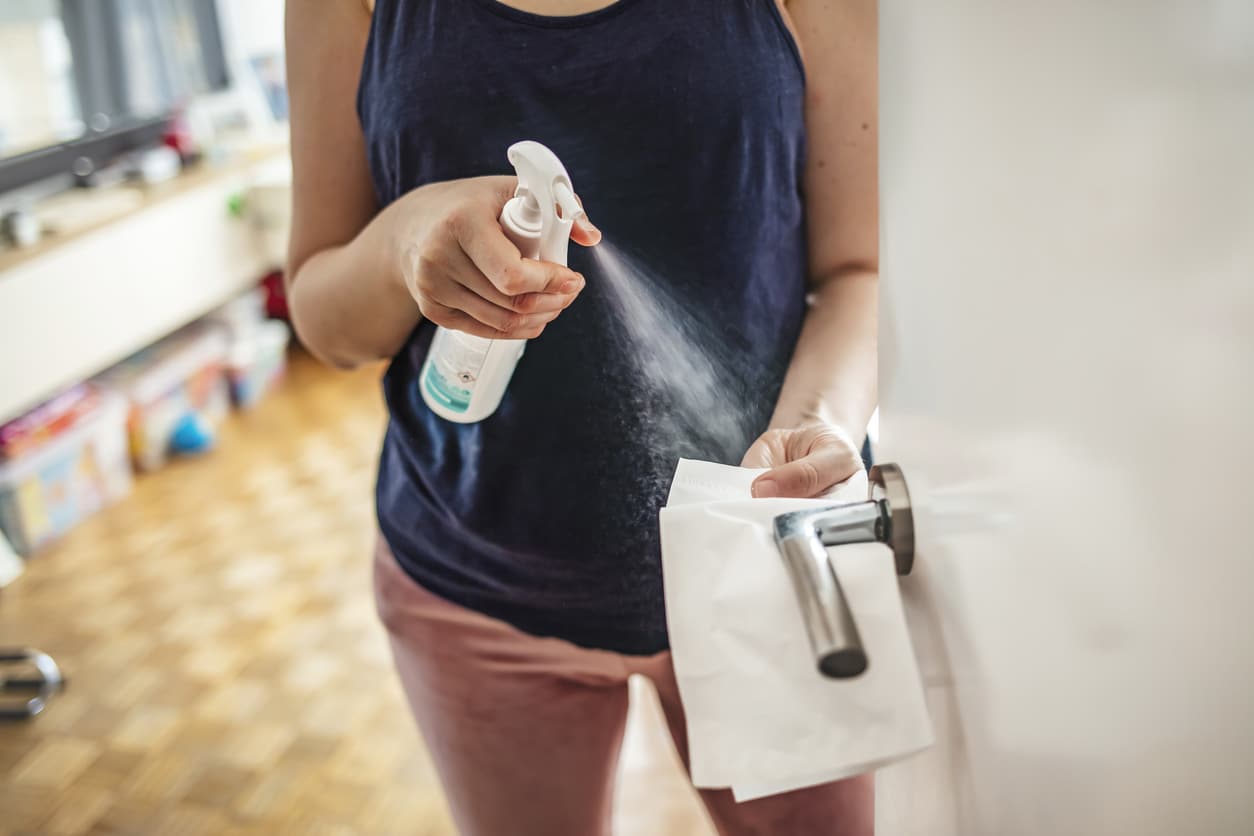Coronavirus spreads from person to person primarily through droplets in the air when someone coughs or sneezes. But scientists also speculate that the virus can spread from a surface to a person. In a study published in the New England Journal of Medicine (NEJM), researchers found that the virus that causes COVID-19 can live on surfaces for up to three days.
The Centers for Disease Control and Prevention (CDC) states: “It may be possible that a person can get COVID-19 by touching a surface or object, like a packaging container, that has the virus on it and then touching their own mouth, nose, or possibly their eyes, but this is not thought to be the main way the virus spreads.”
What’s more, although a virus might be able to live on a surface for hours or days, that doesn’t mean it remains infectious that entire time. It’s possible for a virus to be detectable but no longer infectious.
Still, if you’re worried about how long coronavirus can live on surfaces, here’s what you need to know.
What surfaces does the coronavirus live on?

In the NEJM study, researchers compared how long two coronaviruses could survive on a handful of surfaces. The viruses they compared were severe acute respiratory syndrome coronavirus 2 (SARS-CoV-2, known widely as COVID-19) and a similar human coronavirus known as SARS-CoV-1. Both viruses survived for a similar length of time on the surfaces they used.
For the novel coronavirus, the surface times were:
- In the air: Up to 3 hours in air particles called aerosols
- On copper: Up to 4 hours
- On cardboard: Up to 24 hours
- On plastic: 2 to 3 days
- On stainless steel: 2 to 3 days
Health experts recommend cleaning and disinfecting surfaces you touch frequently like doorknobs, cabinet handles, and light switches. Be sure to use cleaners and disinfectants that work against the virus.
What about coronavirus on my clothing and linens?
There’s still much to learn about COVID-19, but to date, there’s no evidence the virus can survive on clothing. However, health experts recommend following these tips if someone in your household has or is suspected of having COVID-19:
- Wash and dry clothing and linens according to the manufacturer’s instructions. Use the warmest water setting to safely wash your items. Dry everything completely.
- Wear disposable gloves when you handle dirty laundry from a sick person. Throw the gloves away when you’re done and wash your hands immediately. It’s OK to wash a sick person’s clothes with other people’s laundry.
- Do not shake dirty laundry.
- Clean and disinfect clothes hampers.
What about coronavirus on my food?

So far, there’s no evidence showing you can catch COVID-19 from food. The virus is not like norovirus and hepatitis A, two foodborne stomach viruses. Regardless, the Food and Drug Administration (FDA) recommends following food safety practices during the pandemic (and beyond) including these four key steps:
- Clean the correct way
- Always wash your hands with soap and water for at least 20 seconds before preparing or eating food.
- Wash utensils, plates, cutting boards, and countertops with hot, soapy water.
- Rinse fruit and vegetables before eating.
- Wipe canned food lids before opening.
- Separate raw from fresh and packaged
- Don’t mix raw meat, poultry, seafood, and eggs with other foods in your grocery cart, shopping bags, or refrigerator.
- Don’t reuse marinades you used on raw meats.
- Dedicate one cutting board for raw foods only.
- Cook to the safest temps with a meat thermometer
- Beef, pork, lamb at 145°F
- Fish at 145°F
- Ground beef, pork, lamb at 160°F
- Turkey, chicken, duck at 165°F
- Chill food in the fridge ASAP
- Place food in the fridge or freezer within 2 hours (or 1 hour if outdoor temperatures are above 90°F).
- Thaw in the fridge, microwave, or under cold water.
- Marinate meats in the fridge.
Recommendations from public health experts change often as the pandemic continues to unfold and new studies get published. Stay informed by checking back with us often.
How to disinfect

Again, the most important precaution to take is to wash your hands regularly. As soon as you return home from being in public, wash your hands. If you don’t have quick access to soap and water, hand sanitizer is a good back up option. In addition, you should try to disinfect the high-touch areas in your kitchen and home on a regular basis. This includes:
- Doorknobs
- Tables
- Countertops
- Hard-backed chairs
- Light switches
- Phones
- Tablets
- Touch screens
- Remote controls
- Keyboards
- Handles
- Desks
- Toilets
- Sinks
For cleaning, most common EPA-registered household disinfectants will work. Check the CDC’s recommendations for household cleaning and disinfection products.
This article originally appeared on GoodRx.com

Ana Gascon Ivey
Healthcare Writer/Editor
Healthcare writer and content strategist with nearly a decade of experience. She holds a degree in Communications and a certificate in Spanish for Medical Professionals.


